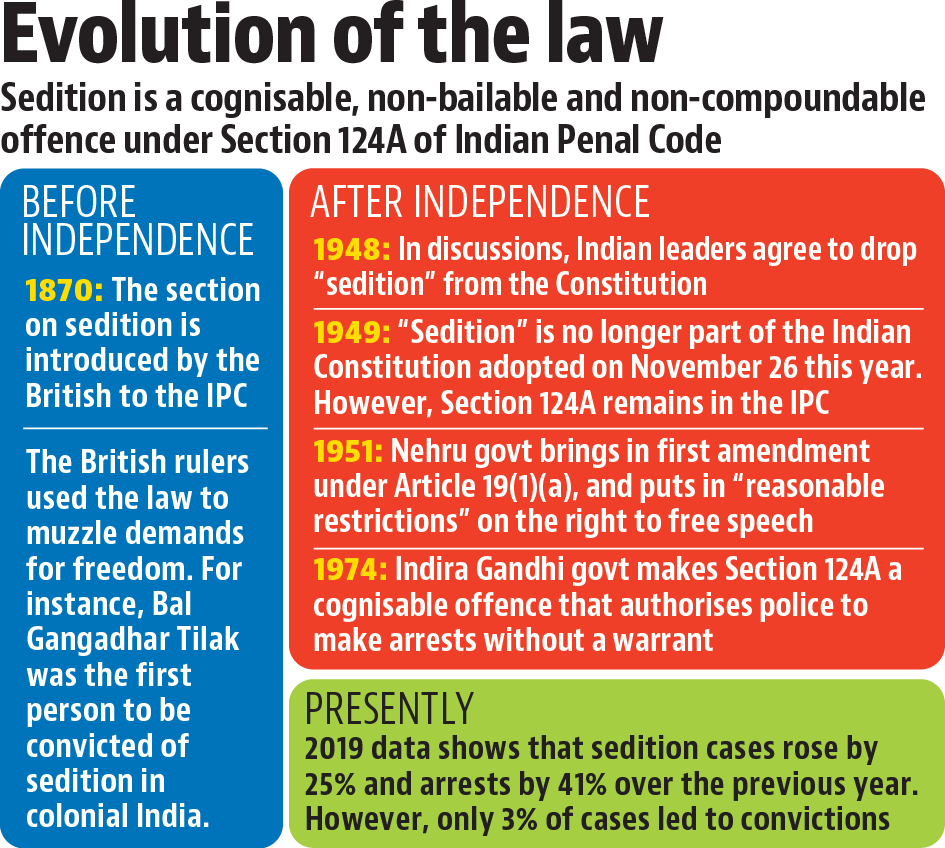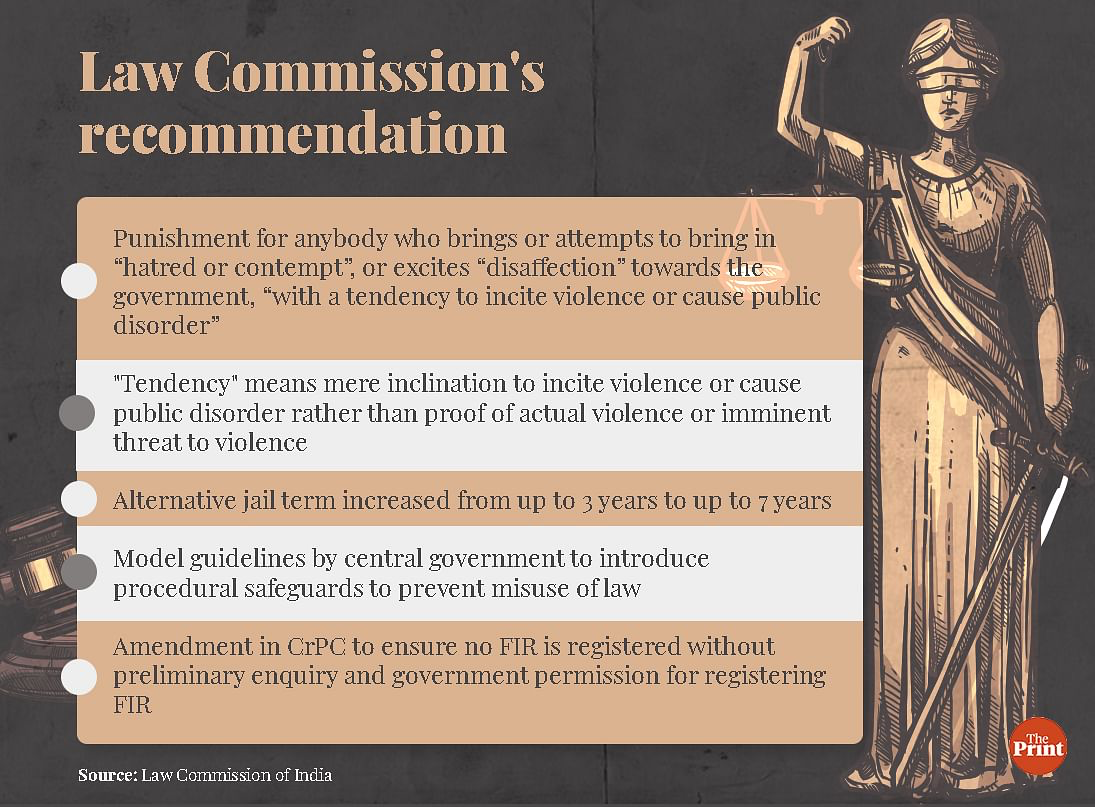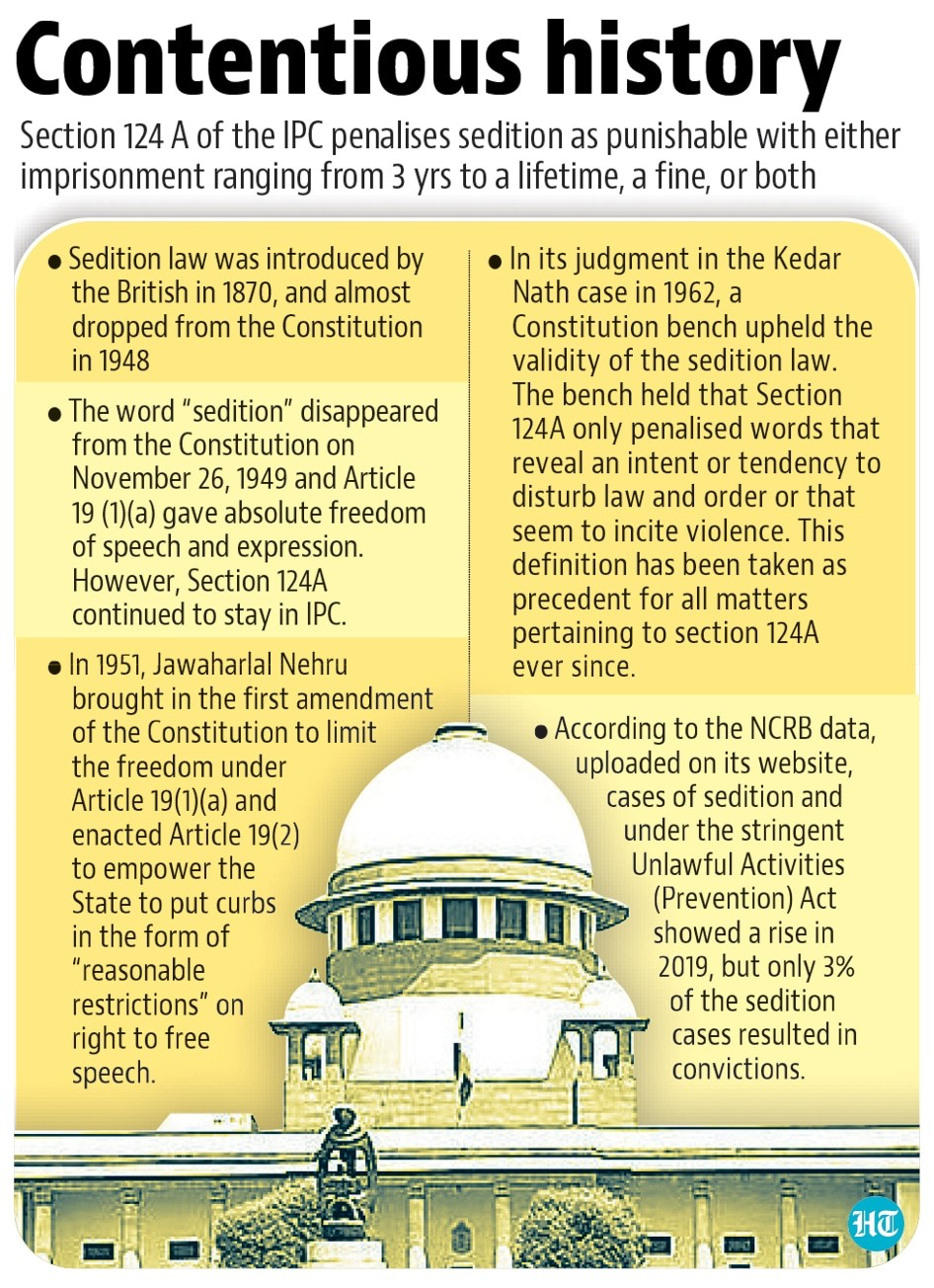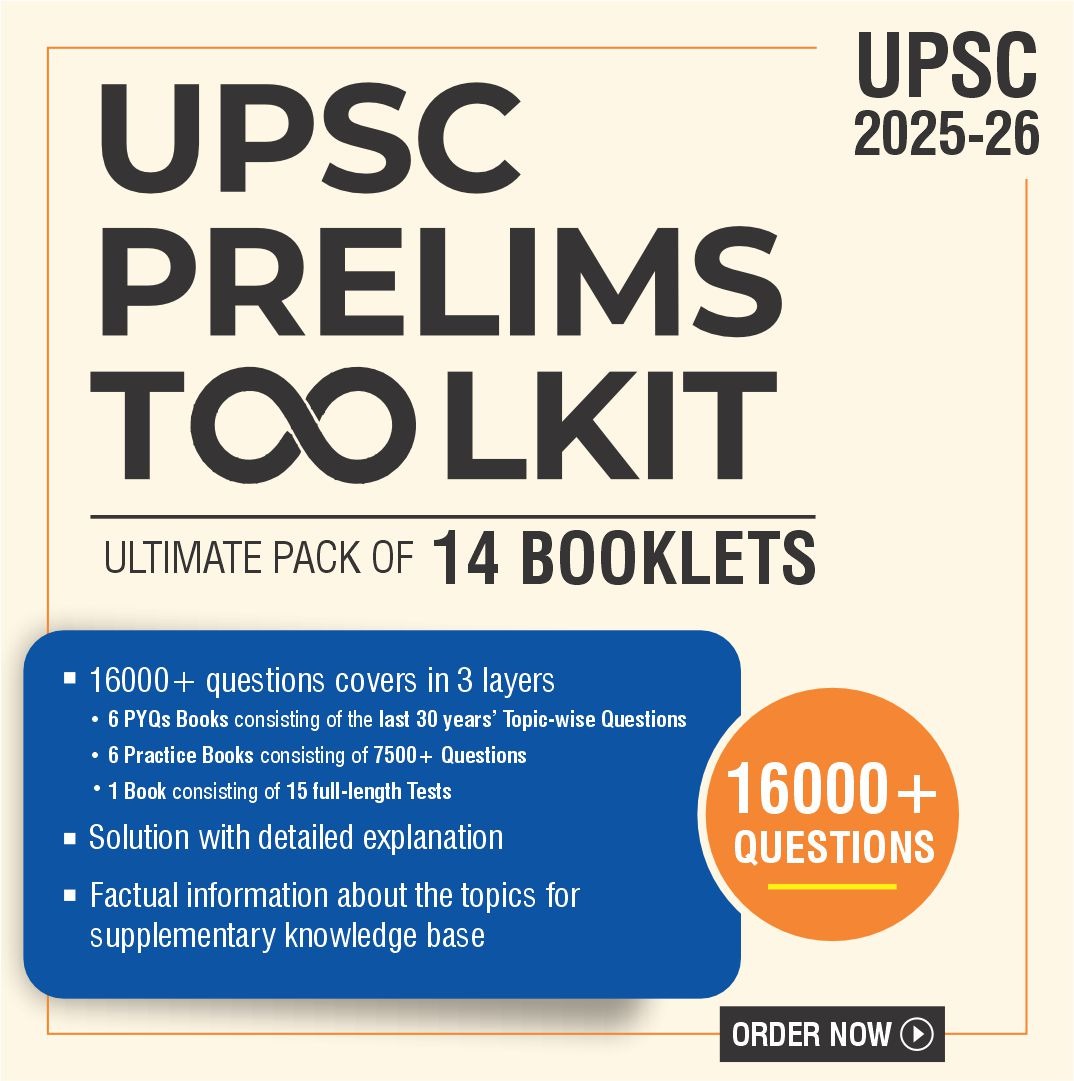Contents
- 1 Introduction
- 2 What is Sedition?
- 3 What are the Law Commission’s recommendations on sedition?
- 4 What are the reasons for the recommendation of strong sedition law by the Law Commission?
- 5 What are the recommendations of other commissions and judgments on sedition?
- 6 What are the concerns associated with the Law Commission’s recommendations on sedition?
- 7 What should be done?
| For 7PM Editorial Archives click HERE → |
Introduction
The 22nd Law Commission’s recommendations on sedition have recently stirred huge debate. The Commission advocated amendments instead of repeal, the Commission sought to refine the law to ensure alignment with past Supreme Court (SC) judgments and to appropriately calibrate punishments.
These recommendations have significant implications as they strive to balance the necessity of preserving national security and stability with the crucial democratic value of freedom of speech. However, concerns persist about the potential misuse of the law, its impact on dissent and democratic discourse, and the ambiguity surrounding its application.
What is Sedition?

| Must read: Section 124 A or Sedition law |
What are the Law Commission’s recommendations on sedition?

Amendment rather than repeal: The Law Commission recommends amending, rather than repealing, Section 124A of the Indian Penal Code (IPC). This is based on their belief that the elimination of this law could pose a threat to the country’s security and integrity.
Alignment with Kedar Nath verdict: The Commission proposes that the amendment should align with the SC 1962 Kedar Nath verdict. This judgment stipulates that there must be a ‘pernicious tendency to incite violence’ to invoke the sedition law, safeguarding against its misuse for stifling free speech.
Incorporation of ‘Tendency’ concept: The recommended amendment to Section 124A incorporates the concept of a ‘tendency to incite violence or cause public disorder’, as clarified in the Kedar Nath judgment. The term ‘tendency’ refers to a mere inclination to incite violence or cause public disorder.
Procedural safeguards: The Law Commission suggests adding procedural safeguards to prevent misuse of the Sedition law. These may include a revision to Section 154 of the Criminal Procedure Code stipulating that an FIR under Section 124A can only be registered following a preliminary inquiry by a police officer and subsequent approval by the central or state government.
| Must read: Sedition law can be retained but with safeguards: Law Commission |
What are the reasons for the recommendation of strong sedition law by the Law Commission?
| Read here: The reasons Law Commission gave while recommending a stronger sedition law |
What are the recommendations of other commissions and judgments on sedition?

Recommendation of the 21st law commission: The 21st Law Commission of India also dealt with the question of sedition. While it didn’t provide an explicit recommendation, it released a consultation paper in 2018 seeking public views on the sedition law.
The consultation paper suggested that every irresponsible exercise of the right to free speech and expression should not be termed seditious in a democracy. The Commission expressed concern that the sedition law should not be misused to suppress free speech, an essential element of a vibrant democracy.
Various Judgements on Sedition
Kedar Nath Singh vs Bihar (1962): The SC in the landmark judgement of Kedar Nath Singh vs Bihar in 1962 upheld the validity of the sedition law. However, it clarified that the application of the law should be limited only to acts involving intention or tendency to create disorder, or disturbance of law and order, or incitement to violence. This interpretation added a crucial qualifier to the sedition law – mere criticism of the government could not be termed as sedition unless it incited violence.
Balwant Singh vs Punjab (1987): In another important judgement, Balwant Singh vs Punjab, the SC held that mere words or slogans against the State which do not lead to violence cannot lead to invocation of section 124A IPC. In this case, two individuals were acquitted of sedition charges for shouting pro-Khalistan slogans on the day Indira Gandhi was assassinated. The court stated that raising of some lonesome slogans, a couple of times, which neither evoked any response nor any reaction from anyone in the public, would not amount to sedition.
Shreya Singhal vs Union of India (2015): In the case of Shreya Singhal vs Union of India in 2015, the SC held that vague and over-broad offences would be unconstitutional. While this case was primarily dealing with Section 66A of the IT Act, it set a precedent for laws restricting freedom of speech and expression, including the sedition law. The court ruled that any law, including those pertaining to sedition, which infringes on the right to free speech, must not be vague and must be as minimal as possible in its restriction of speech.
What are the concerns associated with the Law Commission’s recommendations on sedition?
Risk of misuse due to the addition of ‘Tendency‘: The Law Commission has suggested an amendment that includes a ‘tendency’ to incite violence as part of the sedition law. However, this introduces a new risk of misuse.
For example, any expression that may be interpreted as an inclination towards causing disorder could lead to sedition charges, even if no actual violence or public disorder occurs. This could potentially result in silencing critics of the government under the guise of maintaining public order.
Contradiction with prior supreme court rulings: The Commission’s recommendation appears to contradict previous judgments of the SC. For instance, in the case of Balwant Singh vs Punjab in 1987, the Supreme Court ruled that merely raising slogans against the state can’t be considered as a ground for applying section 124A IPC.
Contrary to this, the Commission’s recommended language for the amendment may allow the invocation of sedition charges in such scenarios.
Risk of unconstitutionality due to vague offences: The report fails to consider the implications of the Shreya Singhal judgment (2015) where the SC declared that vague and over-broad offences could be unconstitutional. The Court maintained that such laws couldn’t be considered a reasonable restriction on free speech. Despite this, the Commission’s recommendations do not address this potential unconstitutionality.
Dismissing the relevance of comparative jurisdictions: The Commission’s report dismisses the importance of learning from international experiences with sedition laws, stating that the Indian context is unique. However, this dismissive approach could prevent the application of beneficial insights and best practices from jurisdictions that have handled similar legal challenges. For example, the UK abolished its sedition law in 2009 considering it obsolete, which might a pertinent point of discussion in the Indian context.
| Read more: Law Commission’s sedition recommendations: Silencing what’s left of dissent |
What should be done?
Clarification and amendment: There seems to be a strong consensus that Section 124A of the IPC, which defines the sedition law, needs to be clarified and amended. This includes aligning it with the SC 1962 verdict in the Kedar Nath Case.
Re-evaluating SC Judgments: Some concerns were raised regarding the Commission’s interpretation of various SC judgments related to sedition. It might be prudent to reassess these judgments and their implications on the sedition law, including the Kedar Nath judgment, the Balwant Singh judgment, and the Shreya Singhal judgment.
Addressing constitutional challenges: The ongoing constitutional challenges to the sedition law need to be addressed. The report by the Law Commission seems to have disregarded these challenges. A comprehensive review of the law should take into account these challenges and precedents to ensure the law is in line with constitutional principles.
Considering societal context: The SC has noted that the sedition law might not be in tune with the current societal context. This suggests a need for a broader dialogue about the role of the sedition law in contemporary Indian society. There is a need to consider the factors such as changes in communication technology, social media, and evolving norms around free speech and dissent in this respect.
Sources: The Hindu (Article 1, Article 2 and Article 3), Times of India (Article 1, Article 2 and Article 3), The Quint, Live Law, Indian Express, and Hindustan Times.
Syllabus: GS 2: Indian Constitution and Polity – Criminal Justice System.
Discover more from Free UPSC IAS Preparation Syllabus and Materials For Aspirants
Subscribe to get the latest posts sent to your email.







